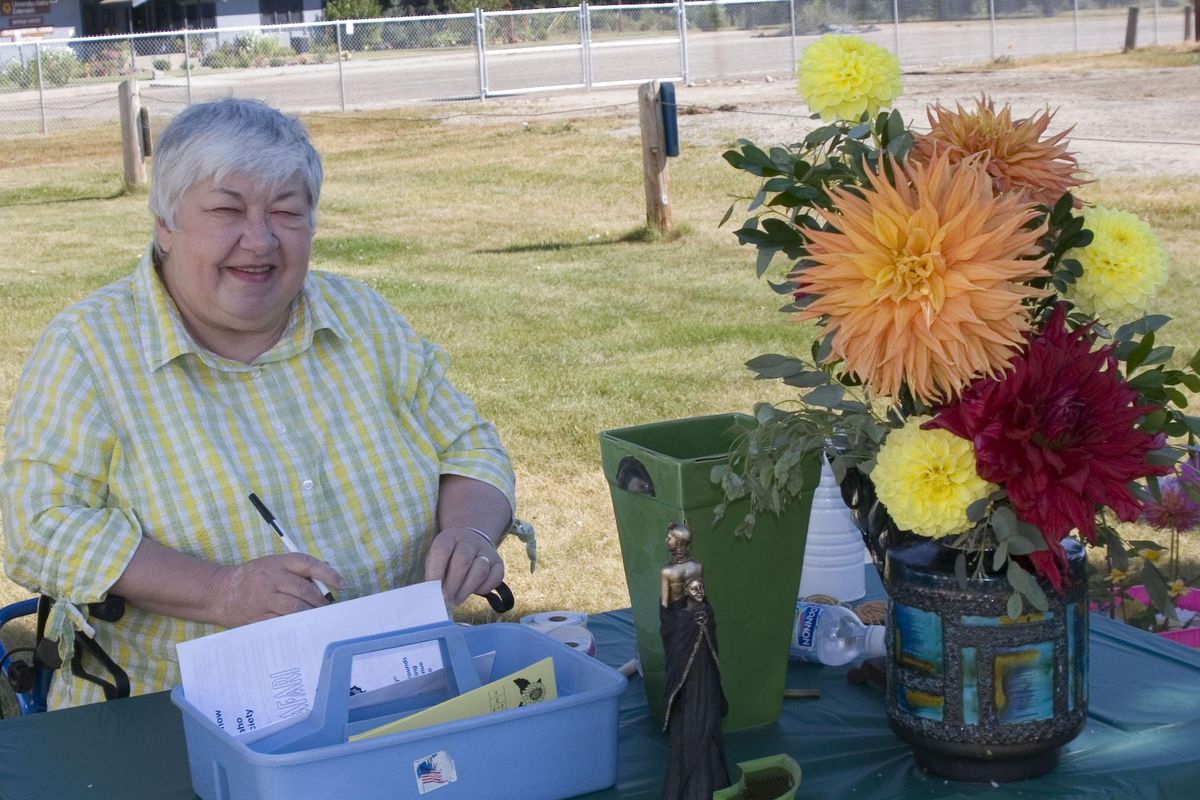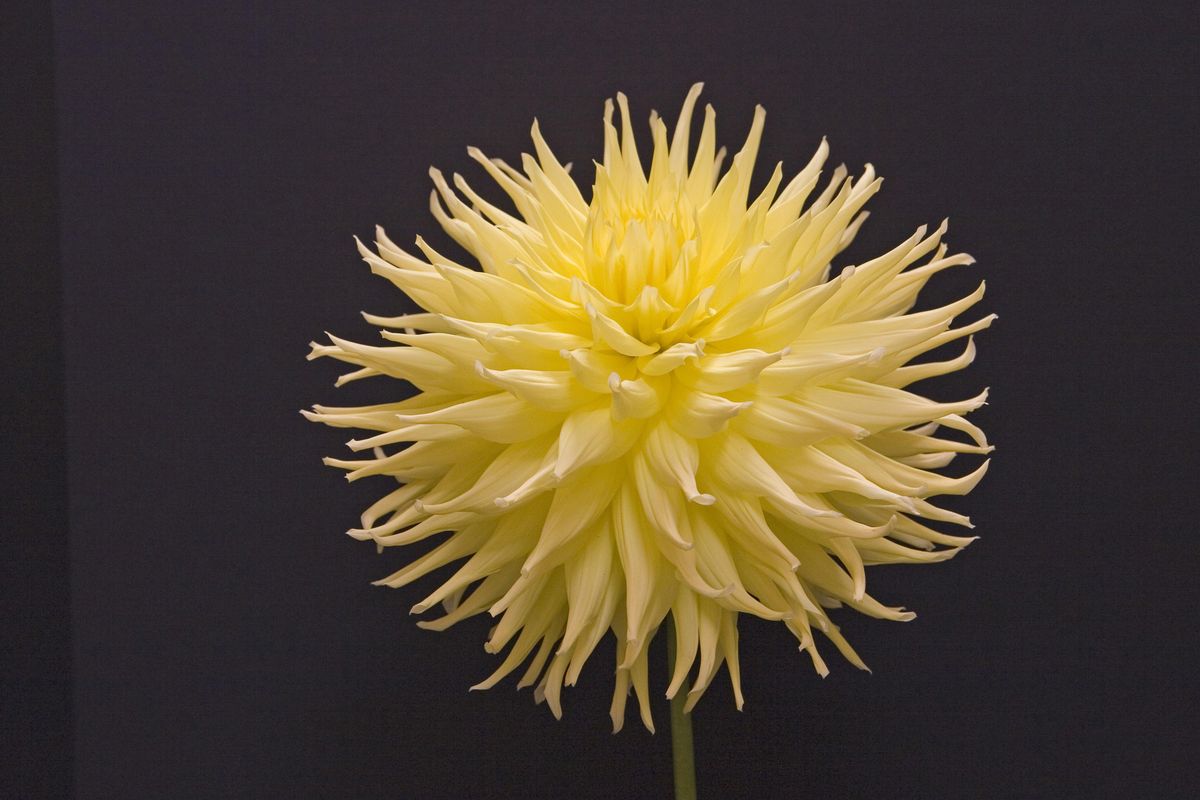Gardening: Dahlias in celebration of local expert Dawn Rae Anselmo
Dawn Anselmo helps out at a North Idaho Dahlia Society event. Anselmo was a world-renowned dahlia breeder and a well-respected member of the Inland Empire Dahlia Society and the North Idaho Dahlia Society. Anselmo died April 10, 2020, at age 80 in Spokane. (unknown / Courtesy of Pat Munts)
I am writing this week’s article in celebration of the life of Dawn Rae Anselmo, a longtime member of the Inland Empire Dahlia Society and a dahlia breeder known around the world. Dawn died April 10, leaving behind dozens of people she taught to appreciate dahlias. She was 80.
Dawn served in many leadership roles in the Inland Empire Dahlia Society and the North Idaho Dahlia Society. In 1980 Dawn and her husband, Norm, introduced the Inland Northwest line of dahlias at the national show held in Spokane. At the 1992 national show, they received the Best New Seedling Award for Inland Dynasty, a huge, pale yellow dinner plate dahlia that went on to win the Stanley Johnson award in 1993.
“She was a wealth of information to many of us in the dahlia society, and she will be missed,” said Claudia Biggs, a friend and fellow dahlia grower. Dawn asked people to plant a dahlia in her memory, so here are some tips.
Growing dahlias
Dahlias are the queens of the late summer garden. Their flowers come in many colors including deep dark red, purple to lavender-blue, yellow and many colors in between. Some are small with single petals. Others are the size of dinner plates with many layers of petals. They are not hard to grow if you follow their rules.
Dahlia tubers look like a bunch of brown carrots. They are frost sensitive and prefer warm soil so wait until early June to plant them in the open garden. They can be started indoors now in shallow trays of soil. They like a rich, well-drained soil so add some compost to your planting area.
To plant, dig a 6- to 8-inch deep hole, and allow at least a foot between plants. Place the tubers so that the pink growing eye will be 2-3 inches deep when the hole is filled in. If you are planting taller dahlias, install stakes to support the plants later in the summer. Water your plants so the soil stays evenly moist but not soggy and try to keep water off the leaves. Wet leaves can lead to mildew issues.
Fertilize the plants with a 10-20-20 low-nitrogen fertilizer after the plants sprout and then every three to four weeks through early September. Too much nitrogen will result in a lot of green growth, few flowers and weak tubers.
In the fall, keep an eye on the temperatures. If a frost is predicted, cut your last bouquet and get ready to dig your tubers. Tubers should be left in the ground until we get a hard freeze to allow them to finish curing. Dig around the clumps gently and remove the entire clump as a unit. Wash them with a fungicide mix and then write the variety name on the tuber with a felt marker. Allow the tubers to dry, loosely wrap them in plastic wrap and pack them in coarse vermiculite or wood chips. Store them at 40 to 45 degrees in an insulated garage.
Remember to plant one for Dawn.

